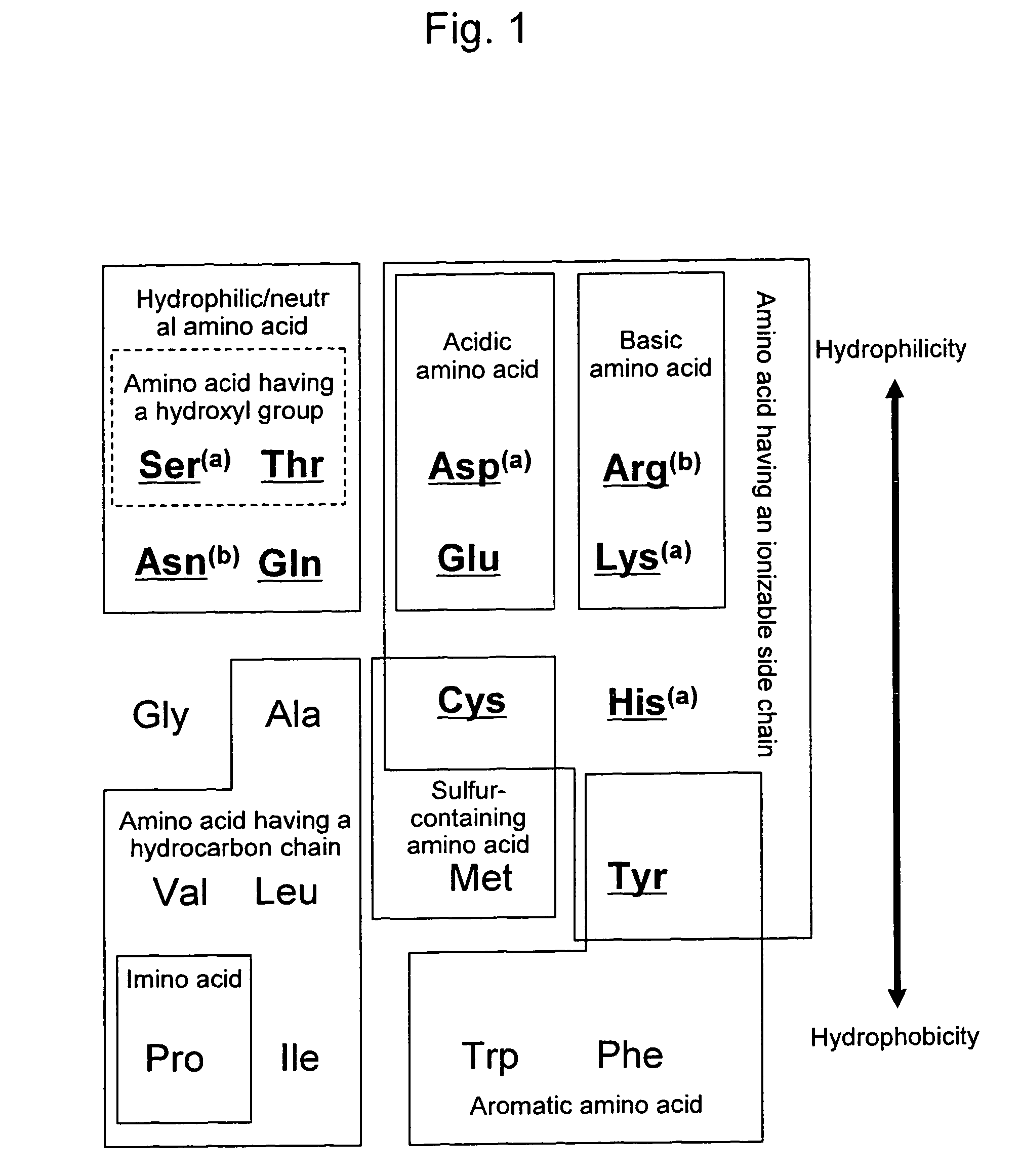Mutant firefly luciferase
a technology of luciferase and firefly, which is applied in the field of mutation firefly luciferase, can solve the problems of reducing the reaction efficiency of the overall sequence analysis, limiting the use of datp originally used as a substrate for a polymerase, and undesirable detection of datp via a luminescent signal
- Summary
- Abstract
- Description
- Claims
- Application Information
AI Technical Summary
Benefits of technology
Problems solved by technology
Method used
Image
Examples
example 1
Production and Activity Measurement of a 422nd-Amino-Acid Mutant Luciferase
(1) Introduction of a Tag Sequence Into a Luciferase Gene
[0074]The wild-type North American firefly luciferase gene was inserted into a pURE2 vector (Post Genome Institute Co., Ltd.) to prepare a pURE2 Luc vector and then a Strep-tag sequence was introduced into the C terminal of the luciferase gene contained in the pURE2 Luc vector.
[0075]An inverse PCR method was used for introduction. A pair of primers was designed in a manner such that the primers were positioned back-to-back with each other across a target site for tag sequence introduction (the C-terminal cite of luciferase) on the circular template DNA (pURE2Luc vector). In such case, a tag sequence to be introduced was added as an anchor sequence to the 5′ terminal of each primer. PCR reaction was carried out under the above conditions such that linear double-strand DNA in which an anchor sequence had been added to the terminal was amplified. The obtai...
example 2
Production and Activity Measurement of a 421st-Amino-Acid Mutant Luciferase
(1) Production of Recombinant Vectors Each Comprising a Mutant Luciferase Gene
[0090]Site-specific substitution was induced in the DNA nucleotide sequence with the use of, as a template, a pURE2 Luc C-Strep vector comprising the wild-type North American firefly luciferase gene to which a Strep-tag sequence has been bound at the C terminal in a manner such that a gene encoding the 421st amino acid (Gly) was substituted with a gene encoding any one of the other 19 different amino acids. For such substitution, a GeneTailor Site-Directed Mutagenesis System (Invitrogen) was used in accordance with the manufacturer's protocols. The primer sequences used for mutation were as follows. In addition, sequence analysis of each vector subjected to mutation was carried out in order to confirm the occurrence or nonoccurrence of mutation and the presence or absence of PCR errors.
[0091]
(SEQ ID NO: 7)Gly421-R:5′-AGAATGTAGCCATCC...
PUM
| Property | Measurement | Unit |
|---|---|---|
| total volume | aaaaa | aaaaa |
| pH | aaaaa | aaaaa |
| total volume | aaaaa | aaaaa |
Abstract
Description
Claims
Application Information
 Login to View More
Login to View More - R&D
- Intellectual Property
- Life Sciences
- Materials
- Tech Scout
- Unparalleled Data Quality
- Higher Quality Content
- 60% Fewer Hallucinations
Browse by: Latest US Patents, China's latest patents, Technical Efficacy Thesaurus, Application Domain, Technology Topic, Popular Technical Reports.
© 2025 PatSnap. All rights reserved.Legal|Privacy policy|Modern Slavery Act Transparency Statement|Sitemap|About US| Contact US: help@patsnap.com



